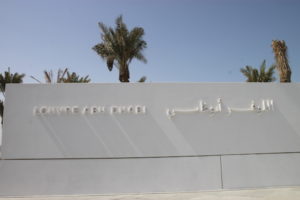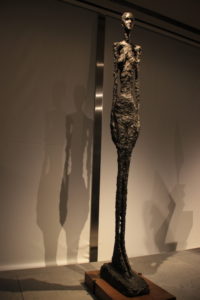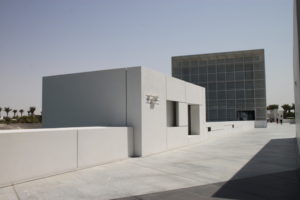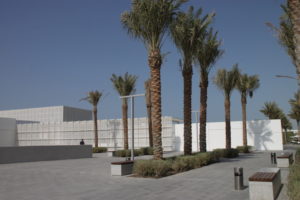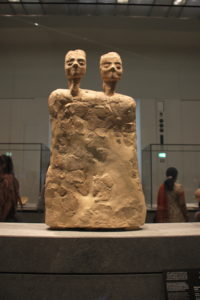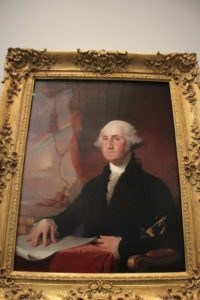Last fall, I went to the Louvre and, with some luck, will be back again this spring. But I wasn’t in Paris, and I won’t be anytime soon.
This Louvre, which opened in late 2017, is in Abu Dhabi, one of the seven emirates on the Arabian Peninsula that comprise the United Arab Emirates (UAE).
Abu Dhabi is by far the largest of the emirates, has the most oil and hence is the richest — but it is not the best known. Dubai is No. 1 in that category, but Abu Dhabi is raising its visibility on the world scene by, among other things, establishing itself as the UAE cultural go-to destination.
The emirate created its Louvre under the terms of a 30-year, $1.27 billion agreement with the French. Forbes Magazine reports that the UAE will pay around $520 million to use the name. The rest of this huge investment buys the services of France’s art experts and access to a rotating stream of temporary exhibits of French-owned art. The French are also assisting the Abu Dhabi museum with choices for its own growing permanent collection.
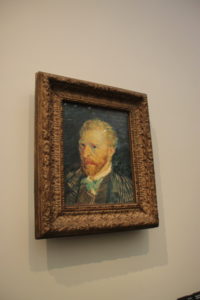
For examples of museum loaners, at least at the time of my visit: Above, Vincent Van Gogh’s “Self Portrait,” on loan from the Musee d’Orsay in Paris. Below, Alberto Giacometti’s “Standing Woman II,” on loan from the Centre Pompidou in Paris.
The Louvre Abu Dhabi is the first museum to open in the emirate’s new cultural zone that also will include the Zayed National Museum, named for Sheikh Zayed, founding father to the UAE, and a Guggenheim. Debut dates for the latter two are uncertain. The Louvre was much delayed so there was hesitation to make promises for the other facilities, at least among the people I spoke to.
I need to talk a little more about the geography before talking about the museum visit.
Abu Dhabi is the name of the emirate, but it also is the name of the city that is the UAE capital, and the city sits on an island, also called Abu Dhabi. Yes, it takes a scorecard.
But there are a lot of other islands. The Abu Dhabi metro area encompasses more than 200 mostly undeveloped islands, which face the Arabian Gulf.
Saadiyat is another of the developed islands. Located quite near the capital city, it is home to the evolving cultural district. It also is home to an NYU (New York University) campus.
Visiting the museum
I visited the Louvre Abu Dhabi as part of a hosted trip for travel journalists, and that sort of thing generally means many activities move faster than the average tourist would like.
Translation: This visit came down to about one hour and 15 minutes to pass through a series of up to 23 galleries plus the Great Vestibule, the entry area which had its own displays.
Not surprisingly, entry involved airport-style security, by which I mean hand-carried items passed through X-ray machines. Admission is about $17 per person, and tickets can be purchased in advance on the Internet or on site.
The Louvre Abu Dhabi, actually on a manmade extension to Saadiyat Island, is almost totally surrounded by water, and visitors can arrive and depart by land or by sea.
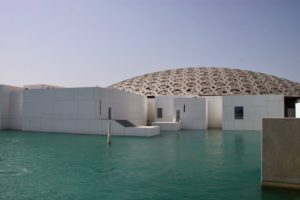
The waterside Louvre Abu Dhabi, noted architecturally for, among other things, its aluminum and steel dome.
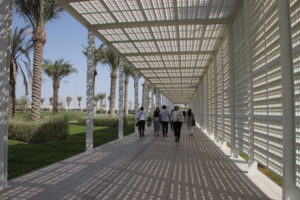
We departed the Louvre Abu Dhabi via this walkway. It’s white like the museum’s buildings and it protects from sun and heat the way the dome does, with shade broken by shafts of light.
The museum is a series of 55 gleaming white middling-sized and small low-rise buildings meant to reflect the look and feel of a Middle Eastern medina.
Further, the exhibit area is topped by an aluminum and steel dome built of eight layers of overlapping star-shaped elements.
The dome’s design, inspired by the leaves on date palms, produces some of the same benefits that the trees provide — shade for relief from sun and heat, while speckling the outdoor spaces with shafts of light.
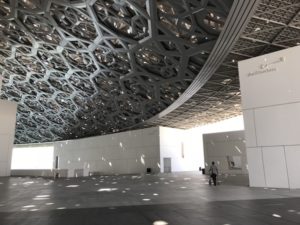
Above and below, outdoor spaces at the Louvre Abu Dhabi under the aluminum and steel canopy that protects visitors from excessive sun and heat.
A visit starts in the Great Vestibule, which on my visit was dotted with a series of cross-cultural displays showing similar types of artifacts, which originated in widely divergent parts of the globe and different time periods.
For example, I stopped in front of one glass-enclosed set of three very different madonnas, created hundreds or thousands of years apart in different parts of the world. Other display units featured, in turn, three masks, three illustrations of horse culture and three funerary pieces.
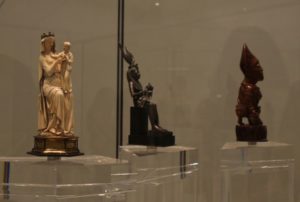
Examples of madonna sculptures from cultures widely separated in time and space, displayed in the Great Vestibule of the Louvre Abu Dhabi.
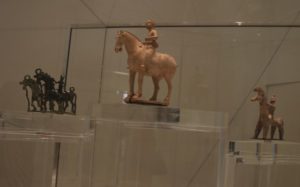
Artifacts from three different eras and places reflecting their creators’ horse cultures, seen in the Great Vestibule of the Louvre Abu Dhabi.
I admit I don’t know if this was a temporary exhibit or if it is permanent.
After this opener, the halls that followed were themed and arranged, to a degree, in chronological order. The museum’s exhibits addressed a humongous portion of human history and its art, ranging from the prehistoric to the current era.
The first major piece in my photos, and definitely one of the first sculptures seen, is called the “Monumental Statue With Two Heads.” It was found in Jordan and dates from about 6500 BCE.
Throughout, the choices for themes and artwork are meant to stress the commonality of the human experience and to avoid being a nationalist or Islam-centric place.
The museum’s owned as well as borrowed pieces include American paintings. For example, the Louvre Abu Dhabi in 2015 bought the Gilbert Stuart portrait of George Washington that I spotted on its walls. (Over the course of his career, Stuart painted around 100 portraits of our first president so lots of museums have such pieces — but that doesn’t mean they are cheap.)
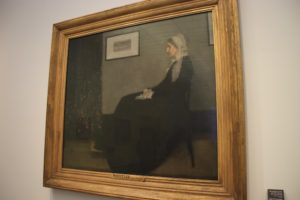
“Whistler’s Mother,” on loan from its French owner, the Musee d’Orsay in Paris. The painter was American James McNeill Whistler.
The sheltered outdoor areas, which show off additional artworks, lead to openings to the sea and include seating spaces under the dome that face a floating stage.
My group of journalists — there were only four of us — rendezvoused as requested in time for a tasty lunch at the indoor Museum Cafe. We selected several plates and shared. I liked the one with quinoa best, a salad.
I look forward to a slower-paced second visit and my second shot at that salad.
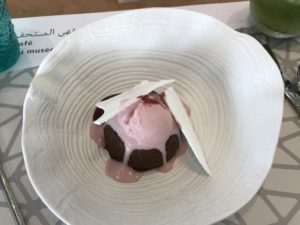
Desserts also were good at the Museum Cafe. Besides, this photographed better than the quinoa salad.
For more about the United Arab Emirates, we offer at BestTripChoices.com the following, under the headline, A study in contrasts:
https://besttripchoices.com/international-countries/united-arab-emirates-abu-dhabi-dubai/
This blog and its photos are by Nadine Godwin, BestTripChoices.com editorial director and contributor to the trade newspaper, Travel Weekly. She also is the author of “Travia: The Ultimate Book of Travel Trivia.”
.

